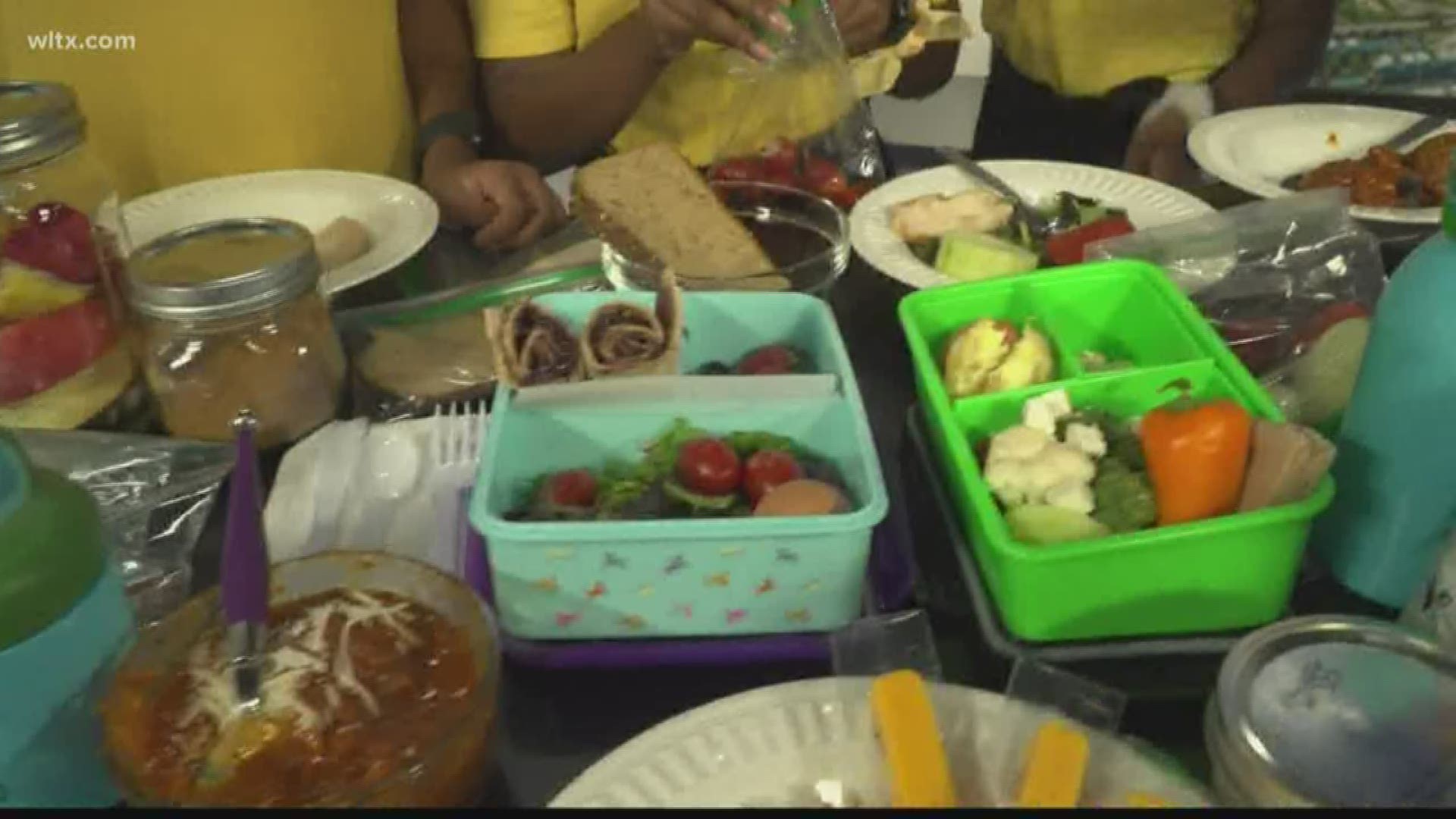COLUMBIA, S.C. — If you're a parent or caregiver, you've likely tackled the back-to-school list: new supplies, sneakers and backpack. But what about the lunch box and what gets packed?
Research shows eating a healthy diet is key to a child’s development, school performance and overall health. The reality, the Centers for Disease Control and Prevention says, is in the United States, the percentage of children and adolescents affected by obesity has more than tripled since the 1970s. Obese children are at risk for psychological and physical problems such as high blood pressure, high cholesterol and chronic disease, including cardiovascular disease and type-two diabetes.
Maintaining a healthy, age-appropriate diet is one-way students can protect themselves against unhealthy weight gain and serious long-term health effects that come with it.
Most schools regularly send schedules of cafeteria menus home in advance or have them posted on the school's website. With this advance information, you can plan on packing lunch on the days when the main course is one your child prefers not to eat.
Here are a few nutrition ideas from doctors and experts to teach your kids the essentials of healthy living, give them the energy they need for their day without taking time out of your day.
Plan and prep.
Choose a day that you are less busy to hit the grocery store, wash and chop fruits and vegetables, and prepare batches of healthy food. Pre-chopped and washed produce, pre-cooked chicken, or canned beans are a great option if you are running short on time.
Keep it simple and accessible.
Keep things simple enough where children can help with the process, from start to finish. Kids are more likely to eat fruits, veggies and meals they help to prepare. Healthy meals that require minimal ingredients can also multitask, for leftovers are a time saver for busy parents.
Stock up on ingredients you can use for more than one meal. For example, grill a dozen chicken breasts tonight for dinner instead of six, then reheat the leftover chicken and salads for the week.
Then conveniently store everything within eye level reach for kids of all ages, in glass mason jars and zip lock baggies. This is also a healthy way for kids to control portion sizes.
Share the experience.
Make family meals and packing lunches together a habit. It can be challenging but pick a dinner time and stick to it! Kids will start to look forward to this special family time and arrange their schedules around it. Talk and listen to each other while you eat and pack. Have everyone at the table share something that happened that day whether funny, weird, scary, good or bad.
If you want your kids to eat healthy, be an example.
Create a blueprint for healthy eating.
If parents need a little help in that area, let the Kids Healthy Eating Plate be your guide. It is a blueprint to help parents educate and encourage their children to eat well and keep moving.
The plate guidelines emphasize a simple way to add variety and quality in food choices. It recommends filling half your plate (or lunch box) with colorful fruits and vegetables. Fill about one-quarter with whole grains like whole grain pasta, brown rice, or quinoa, and the remaining quarter with healthy proteins like beans, nuts, fish or chicken. Healthy fats and a small amount of dairy round out a tasty meal that will fuel an active, healthy lifestyle. Bento boxes, lunch boxes that contain several small divided containers, are great for portion control, keeping foods separate (if kids prefer foods not touching) and encouraging a variety of these foods.
Choose water.
Don't forget to pack a water bottle for refilling throughout the school day. Water is not only the best choice, but a necessary one. It restores fluids lost through everyday tasks of breathing, sweating, and even digesting meals. It keeps the body's temperature normal on hot days and carries nutrients and oxygen to all cells. It is free of calories, sugar, and caffeine to help maintain a healthy weight. Fluid needs vary based on a child's age, size, gender, and activity level.
The National Academy of Sciences recommends a range of seven to 14 cups of water per day, with the lower end for toddlers and the higher end for teenage boys. Part of this amount can come from water-rich foods like fruits and vegetables.
If your child participates in vigorous sports lasting long periods of time (over one hour), you may consider making your own sports drink to cut back on extra sugar. Harvard nutritionists recommend mixing one quart (32 ounces) of water, 1/8-1/4 teaspoon of salt, and two ounces of 100% orange juice or plain coconut water.
Sugary drinks are a major contributor to the rise in obesity and type 2 diabetes in children. Each 12-ounce soft drink contains approximately 10 teaspoons of sugar and 150 calories and drinking one can of soda a day increases a child's risk of obesity by 60%.
The American Heart Association recently recommended that children and teens consume less than 25 grams, or six teaspoons of added sugar per day, and sugary drinks should be limited to no more than eight ounces per week. See How Sweet Is It? to compare the sugar content of leading commercial beverages.
Food restrictions?
Some schools don't allow kids to bring food with nuts. If this is the case, sunflower butter and other seed butters are a great swap for peanut butter in sandwiches, snacks, or baked goods.
Before you know it, making lunches will be a time everyone in the family looks forward to. For more healthful eating tips, CLICK HERE.

